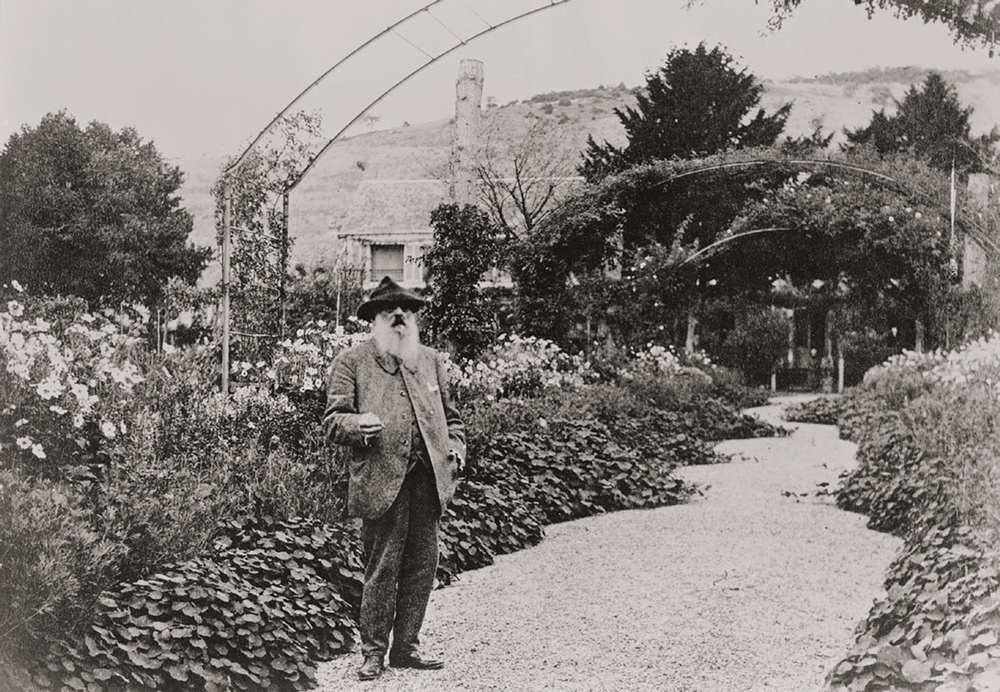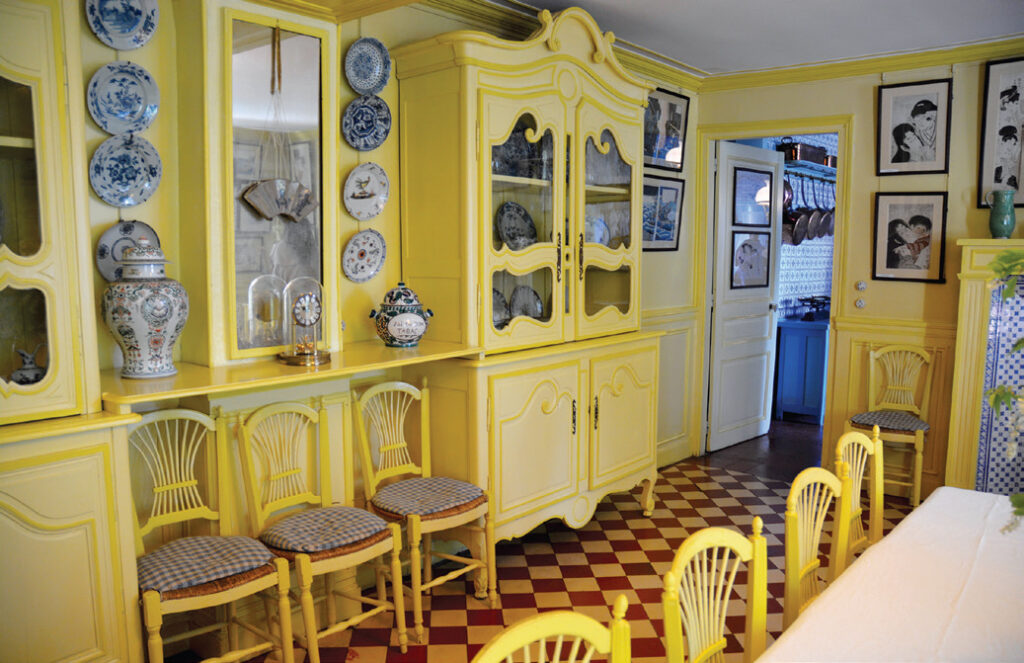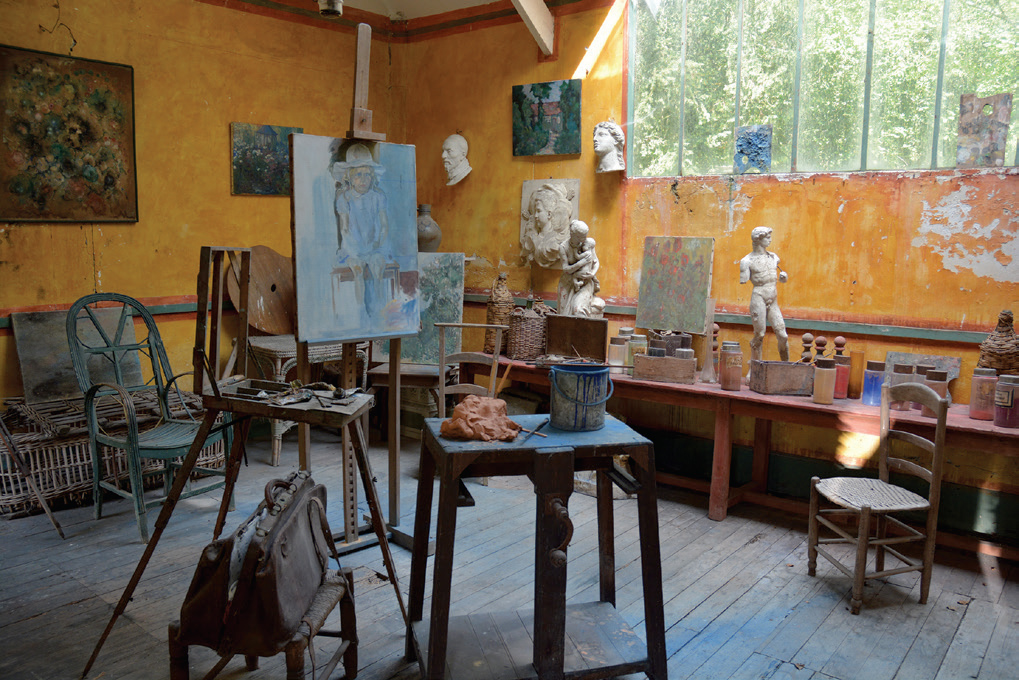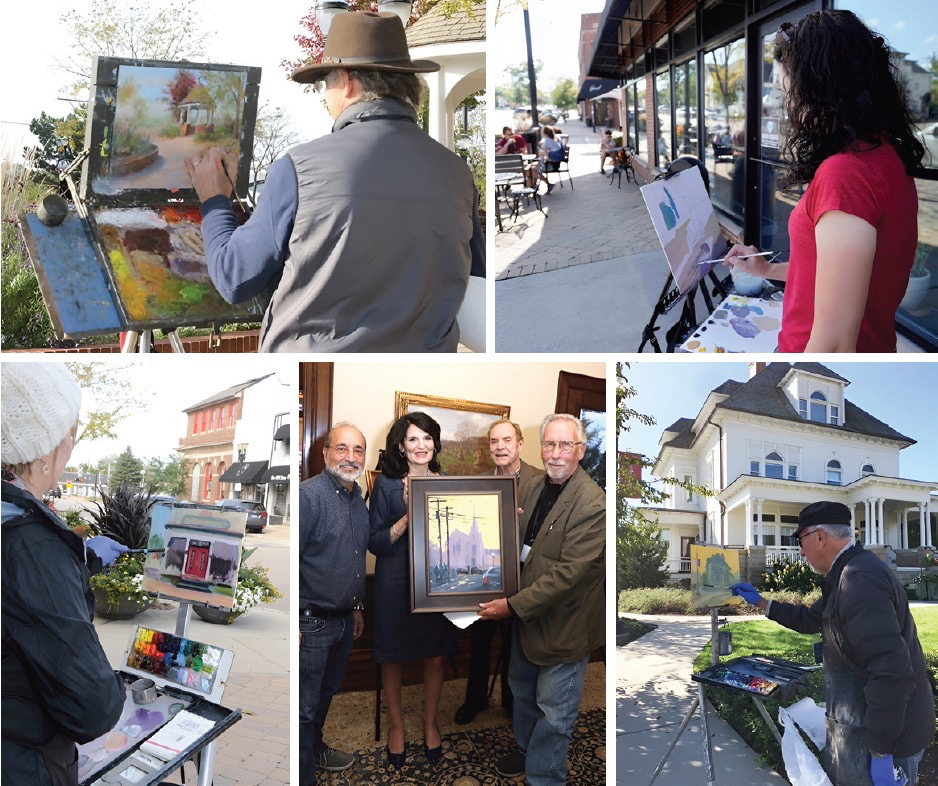

Claude Monet (1840–1926) said that he was good for two things in his life, “Painting and gardening,” and stated that his garden was his “one and only masterpiece.” Once Monet’s paintings finally started to sell in Paris, he was able to finance the move for his wife, two children, and six stepchildren to the country. Giverny is a small, mountainside village in the region of Normandy in Northern France, about 40 miles from Paris. Monet lived and worked there from 1883 until his death in 1926. The artist’s former home and elaborate gardens, where he produced his famed water lily series, are now the Fondation Claude Monet Museum and open to the public.
Monet had the elongated country home’s exterior painted in a soft cherry pink to echo his blossoming cherry trees and finished with an emerald-green trim. Surrounded by brilliant layers of color in his gardens, sky and earth was his canvas. “Color is my daylong obsession, joy, and torment,” Monet said.
Wandering through Monet’s gardens is a chance to see how he “painted” with flowers. He favored color harmonies that can be classified as hot (yellow, orange, and red), and cool (blue, purple, and mauve). He designed his gardens with color patterns that he discovered in nature. The blue, pink, and white groupings, for example, might have been inspired by visits to the Mediterranean. Many plants in the garden today are varieties that Monet himself planted.
One of his influences was Japanese design. The arching wood bridge over his pond, and planted bamboo, are Japanese garden design elements. His large water garden is lined with plantings that are reminiscent of his early painting spaces along the Seine River. He created a similar effect by planting layers of blue lavender, blue forget-me-nots, pink meadow rue, pink tamarix, and the purple smoke tree. Together, these flowers recall the early misty mornings of painting by the river. He planted waterlilies in his water garden, which became the subject of some of his most famous paintings.

Monet lived a life that surpassed being one of the greatest painters of all time. He invested his time and culinary skills entertaining leaders in art and politics at his home, a getaway that must have been a true retreat for his worldly visitors. He was instrumental in leading the Impressionist movement.
The artist lived surrounded by his elaborate flower gardens, and developed a gourmet palate, supplying his family and guests with fresh produce, fruit, herbs, and free-range poultry and ducks. Add to that the region’s prized wines, apples, cheeses, and butter, and you’re living the good life.
Monet’s passion for color is seen in the large, bright yellow dining room, seemingly bathed in sunshine, which leads into the kitchen. His large country kitchen features blue-and-white ceramic tiles from Rouen, and woodwork painted in glossy light blue. It was a contemporary working space with a fourneau économique, a multi-function kitchen stove made of cast iron and sheet metal. These appliances appeared in French kitchens in the early 19th century and offered a huge advance for convenience in the kitchen. A battery of shiny copper pots and pans hang at-the-ready.

The Ancien Hôtel Baudy is a short distance down the narrow Rue Claude Monet from the Monet estate. The hotel has been a famous place of passage for many French and American artists. In the back of the hotel is an enchanting artist’s studio, up a short set of stairs. For classical and en plein air painters today, this space is nirvana. Built in 1887, it has a glass roof to the north, providing constant and natural light. This room allowed the study of the nude, a constant for Monet. It remains as it was, when visited by European and American luminaries such as Cézanne, Renoir, Sisley, Rodin, Mary Cassatt, and of course, neighbor Monet.
One of the greatest catalysts of the Impressionist art movement was the metal tube with cap, patented in 1904, which enabled artists to travel with their paint outdoors and paint for longer periods of time. Artist Pierre-Auguste Renoir is quoted as saying: “Without paint in tubes there would have been… nothing of what the journalists were later to call Impressionists.”
A small patch of poppies by the Hotel Baudy is a poignant reminder that Giverny is just a two-hour drive from Normandy. Years of natural selection have created poppies in colors that are only found in Giverny. Claude Monet painted these flowers too, with his 1883 ‘Vase with Poppies’ and ‘Poppies in Chinese Vase’.

Plein Air painting began in Barrington with three local painters gathering on a Friday to paint their favorite landmarks. Today, it has grown to 20 to 30 painters participating each fall to compete in the annual event hosted by the Village of Barrington and Barrington’s Cultural Commission. “Painters bring their artistry to our beautiful Village, on street corners, in parks, and more,” Rollin Potter said. “Please stop by to see the artists at work and to learn how the paintings begin to take shape for the competition.”
Painting Dates: Friday, September 27 through Saturday, October 5, 2024.
Competition Details: Submission of paintings to be considered for the competition is on Saturday, October 5, from 12-Noon until
1 p.m. A luncheon for painters is in the ballroom at the same time, at Barrington’s White House.
Awards Reception: Winners will be announced at Barrington’s White House at a reception on Saturday, October 5, at 2 p.m. Prize monies awarded will be $500 for First Place, $300 for Second, $200 for Third, along with dining cards for Honorable Mention and Artists’ Choice.
Sign Up: Painters can sign up at: barrington-il.gov/pleinair. Registration will be limited to a maximum of 40 registrants.
Share this Story